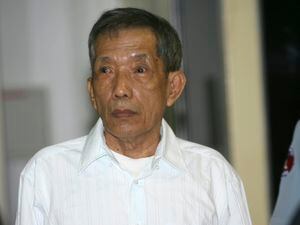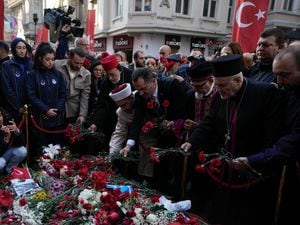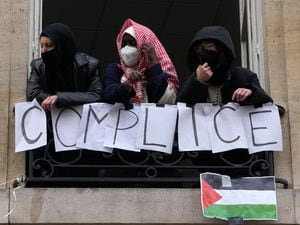Khmer Rouge war criminal Duch dies aged 77
The chief of a top-secret prison was one of the few ex-Khmer Rouge who acknowledged even partial responsibility for his role in Cambodia’s genocide.

The head of the Khmer Rouge’s prison system, who admitted overseeing the torture and killings of thousands of Cambodians, has died.
Kaing Guek Eav, also known as Duch, died at a hospital in Cambodia early on Wednesday morning after suffering breathing difficulty, said Neak Pheaktra, a spokesperson for the tribunal in Phnom Penh that handled the trials over the regime’s crimes.
Duch had been serving a life prison term for war crimes and crimes against humanity.
In 2009 he became the first senior Khmer Rouge figure to face the UN-backed tribunal that had been assembled to deliver justice for the regime’s brutal rule of Cambodia in the late 1970s.

The commander of the top-secret Tuol Sleng prison code-named S-21 was one of the few ex-Khmer Rouge who acknowledged even partial responsibility for his actions.
Men, women and children seen as enemies of the regime or who disobeyed its orders were jailed and tormented there, and only a handful survived.
“Everyone who was arrested and sent to S-21 was presumed dead already,” he testified in April 2009.
Torturers under Duch beat and whipped prisoners and shocked them with electrical devices, Duch admitted to the court, but still he denied accounts from survivors and other trial witnesses that he took part in torture and executions himself.
The children of detainees were killed to ensure the next generation could not take vengeance, with Duch calling himself “criminally responsible” for babies’ deaths but blaming his subordinates for battering the young bodies against trees.

Like many key members of the Khmer Rouge, Duch was an academic before he became a revolutionary. The former math teacher joined Pol Pot’s movement in 1967, three years before the US started carpet-bombing Cambodia to try to wipe out Northern Vietnamese troops and Viet Cong inside the border.
The Khmer Rouge seized power in 1975 and immediately attempted a radical transformation of Cambodia into a peasant society, emptying cities and forcing the population to work on the land.
They backed up their rule with ruthless elimination of perceived enemies, and by 1976, Duch was the trusted head of its ultimate killing machine, S-21.
The torture and executions that took place at Tuol Sleng were routinely recorded and photographed, and when the Khmer Rouge were forced from power in 1979, the thousands of documents and film negatives left at the prison became proof of the regime’s atrocities.
Duch fled, disappearing for almost two decades in north-western Cambodia and converting to Christianity until a chance discovery by a British journalist in 1999 led to his arrest.
Duch had several times asked for forgiveness, even offering at one point to face a public stoning, but his surprise request on the final day of the trial to be acquitted and freed left many wondering if his contrition was sincere.





